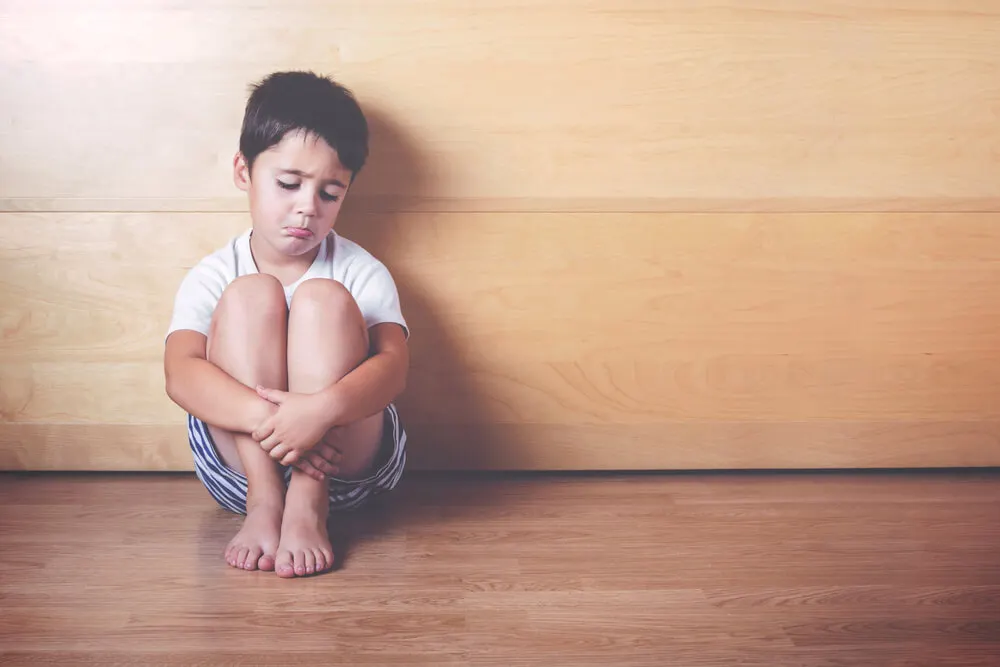Shyness in Children: 6 Tips to Help Them Overcome It


Written and verified by the psychologist Elena Sanz
If your child is shy, you may be concerned about his or her present and future well-being. Perhaps you fear that he or she will fail to make friends, will suffer in the social settings he or she will encounter later in life, or that there’s something wrong with him or her that you “don’t know how to fix.” In reality, shyness in children is natural to some extent. Moreover, it’s possible to intervene so that it doesn’t reach levels that limit or cause discomfort to the child.
It’s important to keep this in mind: shyness is not a life sentence. It’s true that it has a considerable genetic and hereditary component that manifests itself in the temperament with which the child is born. However, upbringing, the environment in which they grow up, and their early experiences can modulate the presence of this trait. Learn ho you can help in this article.
What is considered shyness in children?
Shyness is the tendency to withdraw and feel uncomfortable in new or unfamiliar social situations. It’s often linked to fear of the judgment of others, the propensity to remain silent and to stay in the background.
A shy person feels insecure interacting with strangers. He or she avoids taking the initiative, even when he or she would like more social contact.
It’s common that the child has insecurity and low self-esteem, and this tendency leads him or her to miss out on important opportunities. Therefore, intervention may be necessary.
It’s worth mentioning that a certain degree of shyness is normal and to be expected at certain stages of life. Children may naturally seek security in their parents or reference figures when faced with new or unfamiliar environments. However, eventually, as they grow older, they become more confident.
It’s also true that shyness helps us to be more cautious and reflective, avoid risks, and make better decisions in certain circumstances. However, when it occurs to an excessive degree, it can cause great suffering and hinder school and social development. It can even lead to disorders such as social phobia.
The keys to addressing shyness in children
If you perceive that your child’s shyness is causing discomfort or interfering in their daily life, these are some guidelines that you can apply to help them.

1. Don’t pressure, criticize, or label them
If you’re not a shy person, it may be difficult to understand your child’s reactions. However, it’s important not to invalidate or minimize his or her emotions.
Don’t ridicule the child for being shy or force him or her to change. In the first instance, he or she needs to feel understood, accepted, and supported. It’s from this place of security that he or she will be able to make progress at his or her own pace.
On the other hand, avoid labeling the child as shy, embarrassing, or a loner. Words have more power than we think, and this will only make your child perceive himself or herself more and more in this way. He or she will believe and get into this role and become increasingly reserved and fearful.
We think you may also enjoy reading this article: Why Do we Find it Difficult to Maintain Eye Contact When Speaking?
2. Teach and model social skills
Sometimes, shyness is a product of a lack of social skills that makes the child not know how to get along with others and their interactions are unpleasant. Therefore, it’s a good idea to emphasize social skills such as initiating and maintaining conversations, complimenting, making requests, or saying “no.”
Some children find it harder than others to understand and internalize these rules, but it’s all a matter of practice. By seeing you (as their primary reference figure) interacting with others, they will be able to take certain ideas on board. However, performing dynamics, such as role-playing, can help in this learning process.
3. Offer socialization opportunities
When a child is shy, some parents tend to overprotect him/her and avoid exposing him/her to uncomfortable situations. However, the child needs to practice and have opportunities to gain self-confidence.
Therefore, it’s a good idea to provide spaces where he/she can socialize with other children, apart from school. Signing up for after-school activities and attending camps or workshops related to their hobbies can be good alternatives.
If the child is very fearful, you can start by doing activities with other families or participating in parent-child classes. Your presence will give him security. As the child sees that he or she is capable of achieving, he or she will gain confidence to take on new opportunities on his or her own.
4. Strengthen his or her self-esteem and confidence
Shyness has a large component of insecurity, a lack of self-confidence, and fear of being judged by others. This is why it’s essential to foster a healthy and solid self-esteem, helping your child to identify and value his or her virtues and to accept his or her areas for improvement.
Self-esteem isn’t only about receiving praise and thinking well of oneself, but also about being able to see what we’re not so good at without being mortified by it. Teach your child to see mistakes as natural and acceptable and as part of the learning process, and you’ll relieve a lot of their pressure.
5. Encourage a positive internal dialogue
In line with the above, it’s worth knowing that shy people usually have a severe internal critic in their heads that anticipates everything that can go wrong, narrates the mistakes they’re making in the present time, and reminds them of their past failures. It’s this inner dialogue that can paralyze them.
Therefore, a great idea is to teach children to talk to themselves with love, respect and self-compassion, to be their own best friend and cheerleader. The goal is that thoughts such as the following automatically come to their mind:
- “You did great; I’m proud of you.”
- “You made a mistake, but that’s okay; you’re still valuable.”
- “You can do it; just give it a try.”
For this, these words must first come from their parents: they’re the ones who shape the child’s internal dialogue.

Like this article? You may also like to read: What is Extreme Shyness and 5 Tips for Overcoming It
6. Encourage self-expression and good decision making
Finally, let’s remember that shyness in children makes them stay in the background so as not to attract attention and not to be judged. If we want to counteract this tendency, we can encourage situations in which the child can express him/herself freely and assert his/her opinions in a safe environment. Family conversations, board games, creative and artistic activities… there are many options.
The important thing is to encourage the child to participate, to make his or her voice heard and, of course, to listen to the child, take him or her into account, and value his or her contributions.
Shyness in children may require professional help
Ultimately, if you’ve applied the above guidelines and your child’s shyness is still excessive, don’t hesitate to seek professional help. Keep in mind that negative social experiences or rejection by others can mark you for the future.
It’s important to address the situation as soon as possible. A professional can help your child acquire the tools they need to overcome their shyness.
All cited sources were thoroughly reviewed by our team to ensure their quality, reliability, currency, and validity. The bibliography of this article was considered reliable and of academic or scientific accuracy.
- Kagan, J. (1997). Temperament and the reactions to unfamiliarity. Child development, 68(1), 139-143.
- Ordóñez-Ortega, A., Espinosa-Fernández, L., García-López, L. J., & Muela-Martínez, J. A. (2013). Inhibición conductual y su relación con los trastornos de ansiedad infantil. terapia psicolÓgica, 31(3), 355-362.
This text is provided for informational purposes only and does not replace consultation with a professional. If in doubt, consult your specialist.








